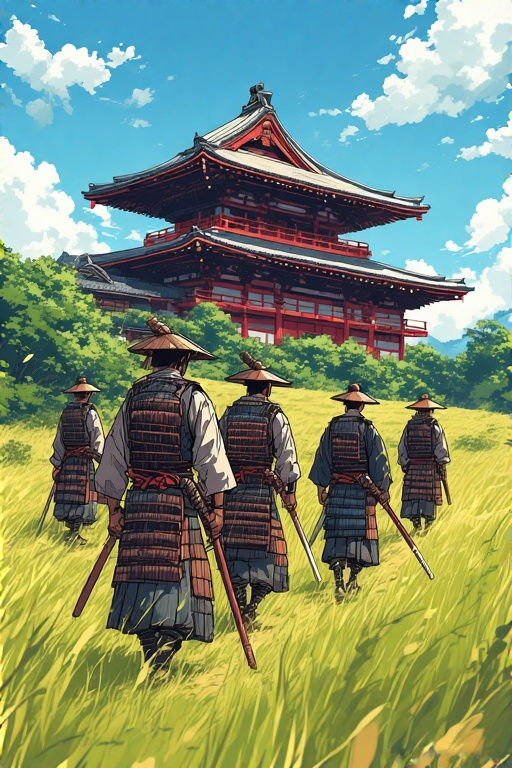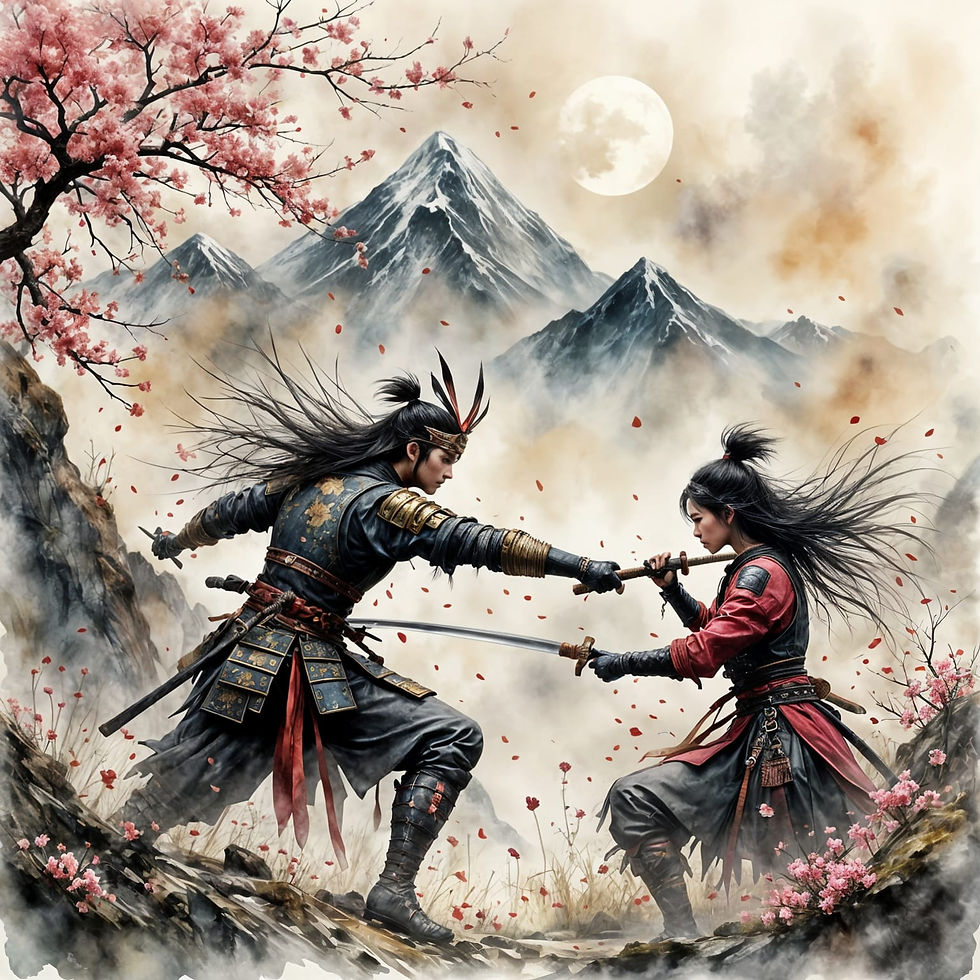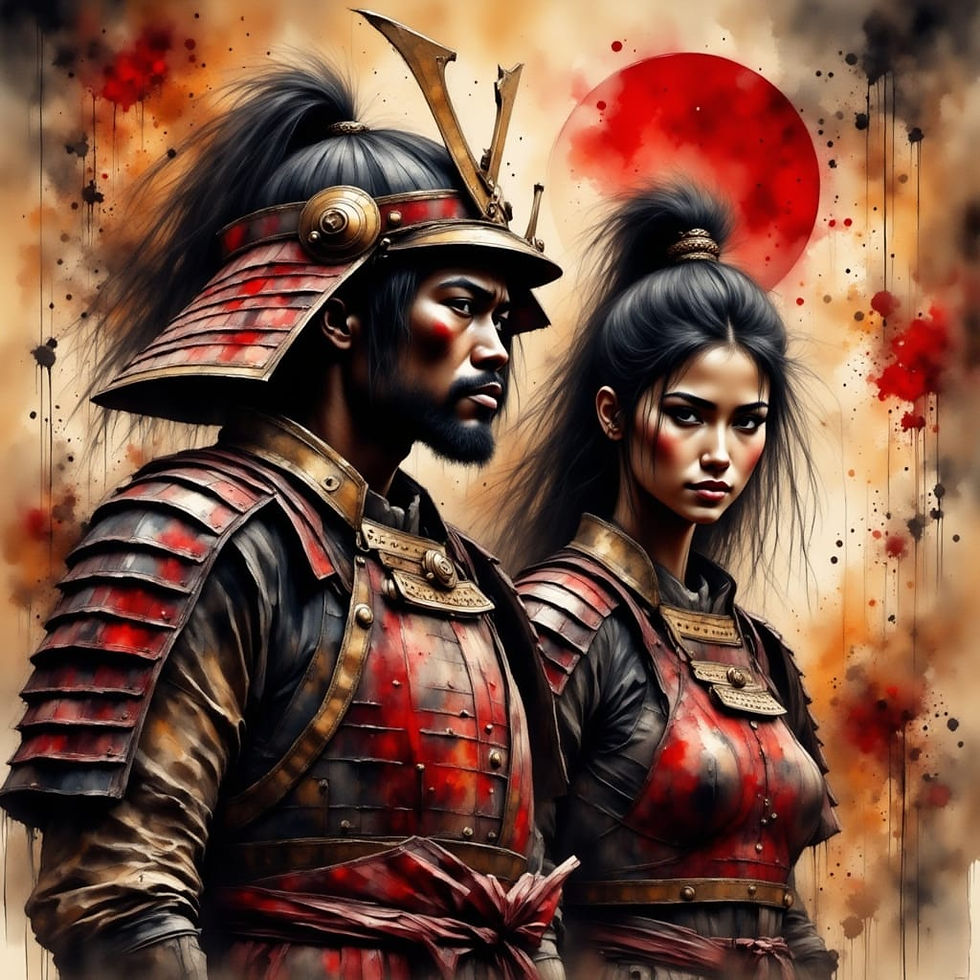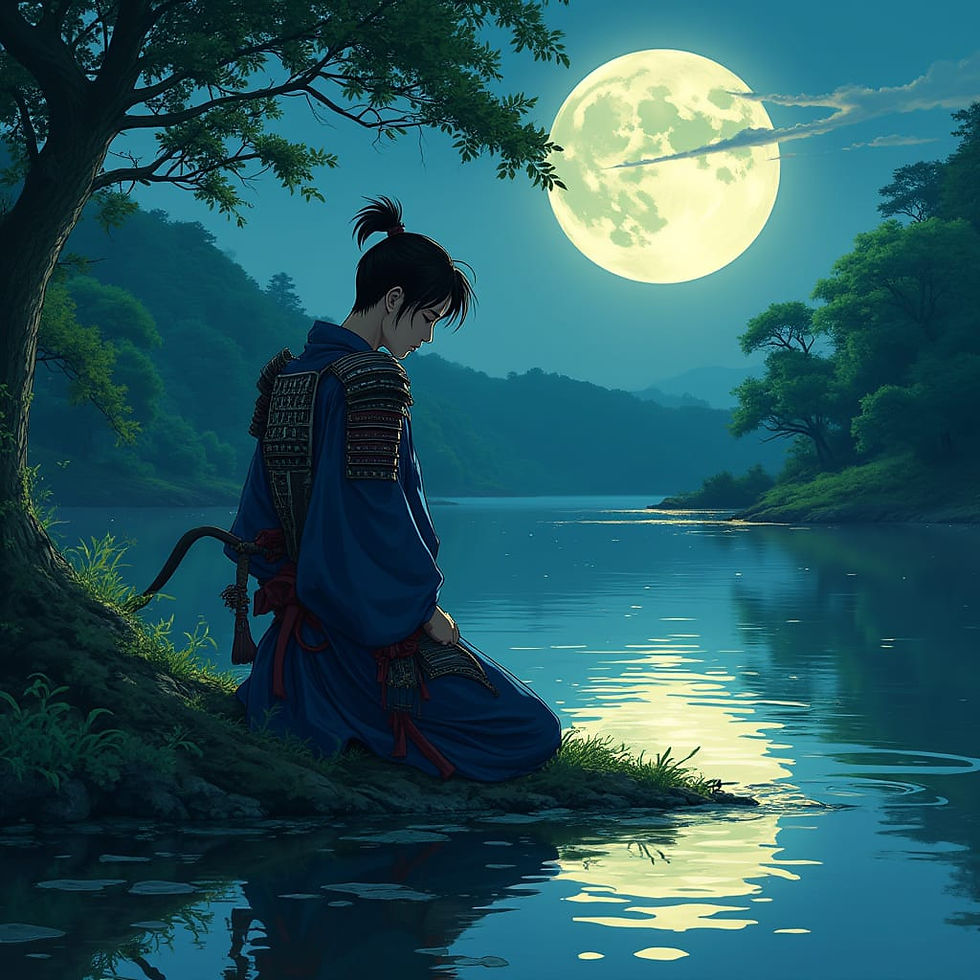From Humble Attendants to Legendary Warriors: The Origin Story of Japan's Samurai
- Larisa Ion
- Jun 17
- 4 min read
Let's embark on a journey back in time, to an ancient Japan where the seeds of legendary warriors were first sown. Imagine a realm of exquisite beauty and refined culture, yet also one grappling with immense change. This is the story of how a group of humble attendants transformed into the mighty samurai, the very heart of Japan's warrior tradition.

A Fading Empire and the Rise of Guardians
Our tale begins during a period known as the Heian Era. Picture a grand imperial court in the capital city of Kyoto, a place of poets, artists, and elegant aristocrats. Here, life was filled with intricate rituals and artistic pursuits. Yet, as the court reveled in its sophisticated world, its watchful eye began to drift from the distant provinces. Great private estates, called shoen, were growing unchecked, held by powerful families and religious institutions, creating pockets of influence beyond the emperor's direct command. With the central government's attention diverted, the countryside began to feel the sting of neglect. Banditry and lawlessness grew, leaving ordinary people and landowners vulnerable.
It was in this uncertain climate that a crucial need arose: the need for protection. People had to fend for themselves, and so they hired armed retainers. These weren't yet the samurai of legend, but rather practical guards and servants. The very word "samurai" comes from the old Japanese word "saburau," meaning "to serve" or "to attend upon." These early "saburau" were, in essence, the private security of their day, ensuring order and collecting resources for their masters in a land where the emperor's reach was gradually shortening.
The Land Forges Its Own Protectors
As these armed guardians became indispensable, they started to organize themselves. They formed warrior bands, and many of these early fighters were, quite remarkably, distant relatives of the imperial family itself. Sent out from the capital to govern, these families settled in the provinces, cleared land, and built up local economies. Over generations, they grew deeply rooted in their new homes, their loyalty shifting from the distant emperor to their own burgeoning clans. They tirelessly honed their skills—especially archery from horseback and swordsmanship—becoming masters of the battlefield, ready to defend their growing territories and resources.
Two of these provincial warrior clans, the Taira and the Minamoto, rose above all others. Both shared noble imperial ancestry, yet they built their power base far from Kyoto, becoming formidable forces in their own right. Their expanding might and increasing ambitions meant that a clash for supremacy was almost inevitable.

A Nation at War: The Gempei Conflict
The underlying tensions between the Taira and Minamoto, stirred by courtly squabbles and disputes over imperial succession, finally ignited the fierce Gempei War. For five long years, Japan was embroiled in a brutal struggle as these two titanic warrior clans battled for the soul of the nation. It was a time of dramatic twists, heroic deeds, and profound betrayals. The Taira initially held an advantage, thanks to their close ties with the imperial court and control of the capital. However, the Minamoto, guided by the strategic genius of Minamoto no Yoritomo and the daring battlefield prowess of his younger brother, Minamoto no Yoshitsune, slowly but surely turned the tide.
The war reached its dramatic climax in a great naval confrontation at Dan-no-ura. There, the Minamoto fleet delivered a crushing defeat to the Taira. This victory was more than just a military win; it was a thunderclap that echoed across Japan. It made one thing unmistakably clear: true power no longer resided with the refined aristocrats of the imperial court, but with the skilled warriors who had won the field.

The Dawn of the Shogun's Rule
Following his decisive victory in the Gempei War and having effectively secured military control over Japan, Minamoto no Yoritomo turned his attention to building a new order. Rather than merely influencing the existing imperial court, Yoritomo envisioned and implemented a completely new system of governance. In 1192, he was granted the prestigious title of Seii Taishogun, or simply Shogun. From his newly established base in Kamakura, far from the traditional imperial capital of Kyoto, he founded the Kamakura Shogunate, a military government often referred to as the "tent government."
This moment marked a profound turning point in Japan's history. While the Emperor remained the revered spiritual and ceremonial head of the nation, the Shogun now held the true political and military authority. This unique dual system of governance, where a military leader effectively ruled above the imperial court, would shape Japan for nearly seven centuries. Yoritomo quickly set up new structures, appointing military governors and estate stewards across the provinces, replacing the old imperial administration with one led by samurai. With the establishment of the Shogunate, the "samurai" had completed their transformation. They were no longer mere armed attendants; they were now the undisputed ruling class of Japan, and their code of conduct, their martial skills, and their disciplined hierarchy would become the very backbone of a new society.

From their humble beginnings as local guardians, the samurai, through centuries of evolving needs and decisive conflicts, rose to become the unchallenged masters of Japan. This foundation laid the groundwork for the development of their unique culture, their legendary martial traditions, and their enduring place in history.



Comments